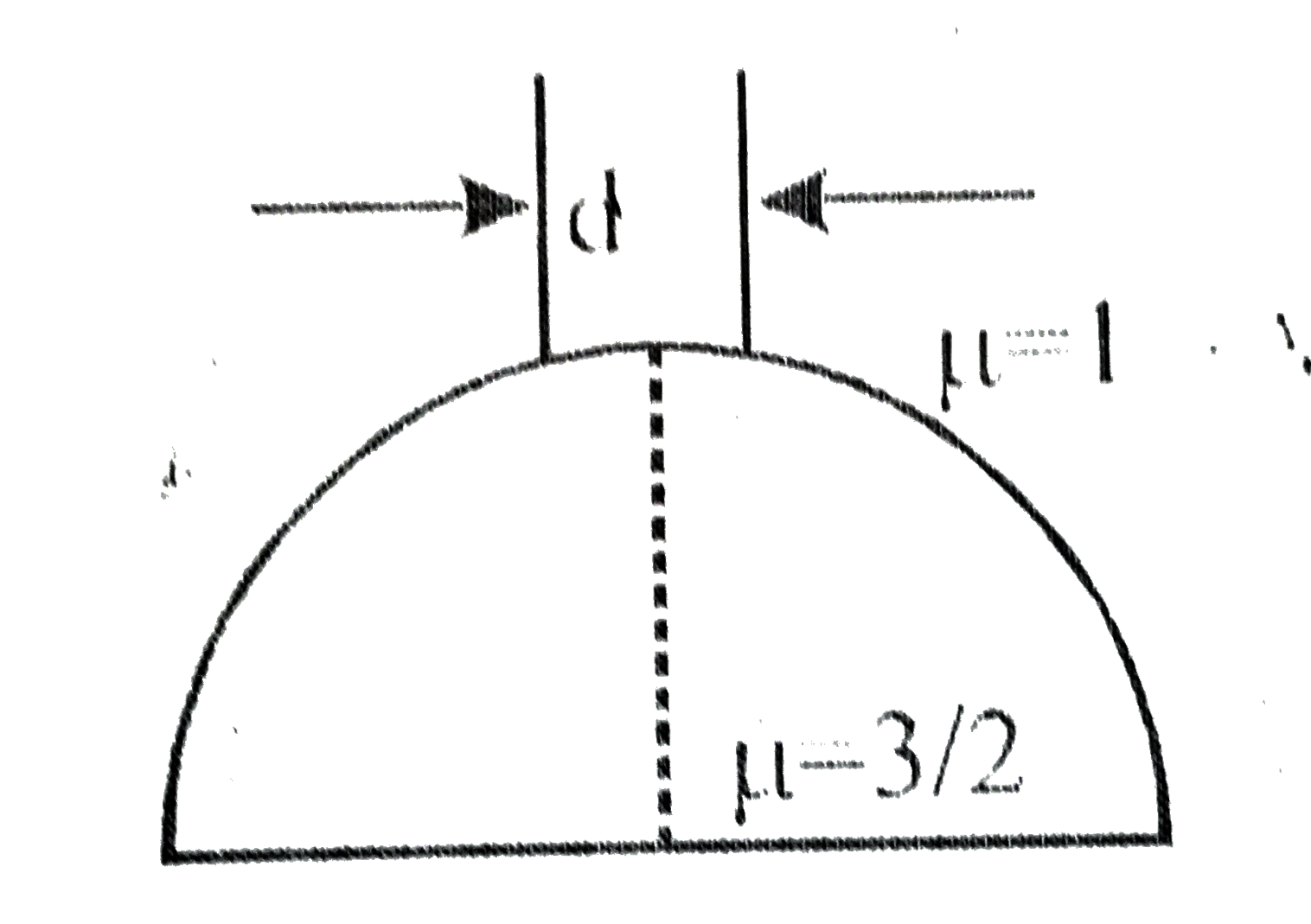A beam of diameter 'd' is incident on a glass hemisphere as shown. If the radius of curvature of the hemisphere is very large in comparison to d, then the diameter of the beam at the base of the hemisphere will be :

34 d
d
d3
23d
The correct Answer is:D

Applying the formula for spherical curved surface :
μ2v−μ1u=μ2−μ1R⇒32v−1∞=32−1R
⇒v=3R
Let x be the diameter of the light falling at base.
dx=3R2R ( similar triangle concept ) ⇒x=23d .
Topper's Solved these Questions
Similar Questions
A cone and a hemisphere have equal bases and equal volumes. What is the ratio of the height of the cone to the radius of the hemisphere?
View SolutionA light beam of diameter √3R is incident symmetrically on a glass hemispher of radius R and of refractive index n=√3 . Find radius of the beam at the base of hemispher.

View Solution
Knowledge Check
A beam of diameter 'd' is incident on a glass hemisphere as shown in the figure. If the radius of curvature of the hemisphere is very large in comparision to d, then the diameter of the beam at the base of the hemisphere will be:
 A34dBdCd3D23d
A34dBdCd3D23dIf the total suface area of a hemisphere is 27π square cm, then the radius of the base of the hemisphere is
A9√3 cmB3 cmC3√3D9 cmTwelve solid hemispheres of the same size are melted and recast in a right circular cylinder of diameter 7 cm and height 28 cm. What is the radius of the hemispheres?
A4.5 cmB3.5 cmC3 cmD3.8 cm
If the radius of a sphere is equal to the diameter of a hemisphere. Find the ratio of volume of sphere to that of the hemisphere.
View SolutionCompute the curved surface area of a hemisphere whose diameter is 14cm
View SolutionVolume and surface area of a solid hemisphere are numerically equal what is the diameter of the hemisphere?
View SolutionVolume and surface area of a solid hemisphere are numerically equal. What is the diameter of the hemisphere. ?
View SolutionA hemisphere has 28 cm diameter. Find its curved surface area
View Solution
